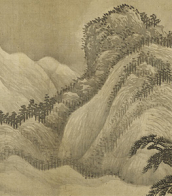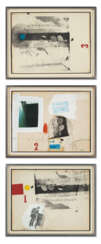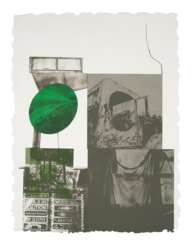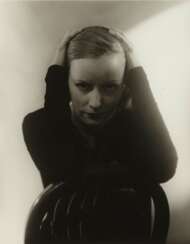chen

Carl Eduard Ferdinand Blechen was a German landscape painter, recognized for his pivotal role in the Romantic movement. Blechen transitioned from a banking job to pursue art, studying at the Berlin Academy and embarking on inspirational journeys to Italy and Dresden. His work, characterized by its vivid landscapes and emotional depth, reflected a new direction in painting, deeply influenced by his travels.
Notably, Carl Blechen's contributions to art were not limited to his creations; he was a respected educator, shaping the next generation of artists as a Professor of Landscape Painting at the Berlin Academy. Despite his professional success, Blechen battled with mental illness, which ultimately affected his career and led to his early death in 1840.
Carl Blechen's artworks, including "The Interior of the Palm House on the Pfaueninsel Near Potsdam," resonate with the Romantic ideals of natural beauty and emotional expression. While many of his pieces are in private collections, his legacy endures, influencing not only landscape painting but also the broader art historical narrative.
For art collectors and enthusiasts, Carl Blechen's work offers a window into the Romantic era's soul, capturing the transient beauty of nature and the human experience. His life story, marked by both brilliance and struggle, adds a poignant layer to his artistic achievements.
For those interested in the intersection of art, culture, and history, particularly in the Romantic period, staying informed about Carl Blechen's contributions and related art events can be enriching. Signing up for updates on new product sales and auction events related to Blechen's work is an excellent way to stay connected with this influential artist's enduring legacy.


Oswald Achenbach was a German painter associated with the Düsseldorf school of painting. Though little known today, during his lifetime he was counted among the most important landscape painters of Europe. Through his teaching activities, he influenced the Kunstakademie Düsseldorf. His brother, Andreas Achenbach, who was twelve years older, was also among the most important German landscape painters of the 19th century. The two brothers were humorously called "the A and O of Landscapes" (a reference to their initials matching a common German reference to the Alpha and Omega).


Gretchen Wohlwill was a painter and member of the Hamburg Secession. She was one of the German students at the Académie Matisse in Paris and developed a painting style influenced by French avant-garde art. In addition to painting, graphics were a focus of her work. Persecuted by the National Socialists because of her Jewish background, she emigrated to Portugal in 1940. After twelve years in exile, she returned to Hamburg in 1952.


.jpg)


Gretchen Wohlwill was a painter and member of the Hamburg Secession. She was one of the German students at the Académie Matisse in Paris and developed a painting style influenced by French avant-garde art. In addition to painting, graphics were a focus of her work. Persecuted by the National Socialists because of her Jewish background, she emigrated to Portugal in 1940. After twelve years in exile, she returned to Hamburg in 1952.


Oswald Achenbach was a German painter associated with the Düsseldorf school of painting. Though little known today, during his lifetime he was counted among the most important landscape painters of Europe. Through his teaching activities, he influenced the Kunstakademie Düsseldorf. His brother, Andreas Achenbach, who was twelve years older, was also among the most important German landscape painters of the 19th century. The two brothers were humorously called "the A and O of Landscapes" (a reference to their initials matching a common German reference to the Alpha and Omega).


Gretchen Wohlwill was a painter and member of the Hamburg Secession. She was one of the German students at the Académie Matisse in Paris and developed a painting style influenced by French avant-garde art. In addition to painting, graphics were a focus of her work. Persecuted by the National Socialists because of her Jewish background, she emigrated to Portugal in 1940. After twelve years in exile, she returned to Hamburg in 1952.


Hugo Oehmichen is a German portrait painter and master of the genre.


Andreas Achenbach was a German landscape and seascape painter in the Romantic style. He is considered to be one of the founders of the Düsseldorf School.[citation needed] His brother, Oswald, was also a well known landscape painter. Together, based on their initials, they were known as the "Alpha and Omega" of landscape painters.

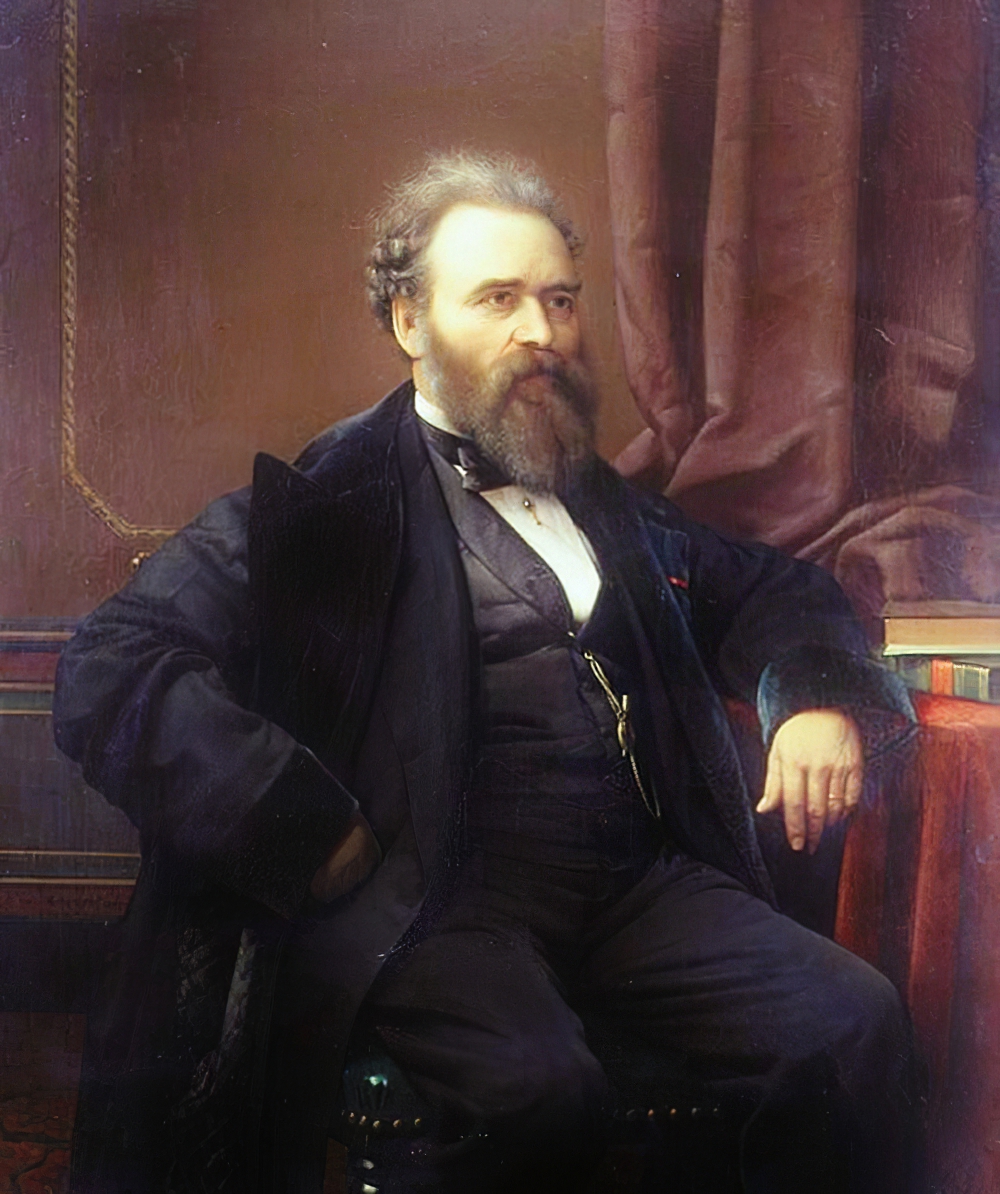
Petrus van Schendel was a Dutch-Belgian genre painter in the Romantic style who specialized in nighttime scenes, lit by lamps or candles. This led to him being known as "Monsieur Chandelle".


Oswald Achenbach was a German painter associated with the Düsseldorf school of painting. Though little known today, during his lifetime he was counted among the most important landscape painters of Europe. Through his teaching activities, he influenced the Kunstakademie Düsseldorf. His brother, Andreas Achenbach, who was twelve years older, was also among the most important German landscape painters of the 19th century. The two brothers were humorously called "the A and O of Landscapes" (a reference to their initials matching a common German reference to the Alpha and Omega).


Robert Milton Ernest Rauschenberg was an American artist renowned for his pioneering work that blurred the boundaries between painting and sculpture, thereby anticipating the Pop art movement. From his early days at the Art Students League of New York to his experiments at Black Mountain College, Rauschenberg's career was marked by innovation and collaboration. His "Neo-Dadaist" approach, shared with contemporaries like Jasper Johns, questioned traditional distinctions between art objects and everyday items, drawing inspiration from Marcel Duchamp's Dadaist principles.
Rauschenberg's most notable works, such as "Erased de Kooning Drawing" and his "Combines," utilized found materials and images to create new art forms that challenged viewers' perceptions. His use of non-traditional materials like twine, soil, and even taxidermied animals, alongside traditional canvas and paint, set new precedents for what could be considered art. His groundbreaking silkscreen paintings incorporated found images, further cementing his role in the evolution toward Pop art.
The artist's work is represented in major museums and galleries worldwide, reflecting his significant impact on contemporary art. His pieces like "Canyon" and "Monogram" are celebrated for their innovative integration of sculpture and painting, while "Signs" captures the tumultuous spirit of the 1960s through its collage of cultural figures and events, housed in institutions like the Museum of Contemporary Art, San Diego, and The Minneapolis Institute of Arts.
For collectors and experts in art and antiques, Rauschenberg's oeuvre represents a critical junction in the history of modern art, where the lines between different media and disciplines were explored and often erased. His legacy is not just in the objects he created but in his bold reimagining of the art-making process itself, encouraging a dialogue between art and life that continues to inspire artists today.
For updates on new product sales and auction events related to Robert Milton Ernest Rauschenberg, consider signing up for our newsletter. This subscription service is tailored specifically for enthusiasts eager to stay informed about the latest opportunities to acquire works by or related to this transformative artist.


Robert Milton Ernest Rauschenberg was an American artist renowned for his pioneering work that blurred the boundaries between painting and sculpture, thereby anticipating the Pop art movement. From his early days at the Art Students League of New York to his experiments at Black Mountain College, Rauschenberg's career was marked by innovation and collaboration. His "Neo-Dadaist" approach, shared with contemporaries like Jasper Johns, questioned traditional distinctions between art objects and everyday items, drawing inspiration from Marcel Duchamp's Dadaist principles.
Rauschenberg's most notable works, such as "Erased de Kooning Drawing" and his "Combines," utilized found materials and images to create new art forms that challenged viewers' perceptions. His use of non-traditional materials like twine, soil, and even taxidermied animals, alongside traditional canvas and paint, set new precedents for what could be considered art. His groundbreaking silkscreen paintings incorporated found images, further cementing his role in the evolution toward Pop art.
The artist's work is represented in major museums and galleries worldwide, reflecting his significant impact on contemporary art. His pieces like "Canyon" and "Monogram" are celebrated for their innovative integration of sculpture and painting, while "Signs" captures the tumultuous spirit of the 1960s through its collage of cultural figures and events, housed in institutions like the Museum of Contemporary Art, San Diego, and The Minneapolis Institute of Arts.
For collectors and experts in art and antiques, Rauschenberg's oeuvre represents a critical junction in the history of modern art, where the lines between different media and disciplines were explored and often erased. His legacy is not just in the objects he created but in his bold reimagining of the art-making process itself, encouraging a dialogue between art and life that continues to inspire artists today.
For updates on new product sales and auction events related to Robert Milton Ernest Rauschenberg, consider signing up for our newsletter. This subscription service is tailored specifically for enthusiasts eager to stay informed about the latest opportunities to acquire works by or related to this transformative artist.
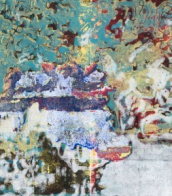

Ivon Hitchens was an English painter who started exhibiting during the 1920s. He became part of the 'London Group' of artists and exhibited with them during the 1930s. His house was bombed in 1940 during World War II. Hitchens and his family abandoned London for the Sussex countryside, where he acquired a small area of woodland on Lavington Common (near Petworth), and lived there in a caravan, which he gradually augmented with a series of buildings. It was here that the artist further developed his fascination with the woodland subject matter, and this pre-occupation continued until the artist’s death in 1979.


Robert Milton Ernest Rauschenberg was an American artist renowned for his pioneering work that blurred the boundaries between painting and sculpture, thereby anticipating the Pop art movement. From his early days at the Art Students League of New York to his experiments at Black Mountain College, Rauschenberg's career was marked by innovation and collaboration. His "Neo-Dadaist" approach, shared with contemporaries like Jasper Johns, questioned traditional distinctions between art objects and everyday items, drawing inspiration from Marcel Duchamp's Dadaist principles.
Rauschenberg's most notable works, such as "Erased de Kooning Drawing" and his "Combines," utilized found materials and images to create new art forms that challenged viewers' perceptions. His use of non-traditional materials like twine, soil, and even taxidermied animals, alongside traditional canvas and paint, set new precedents for what could be considered art. His groundbreaking silkscreen paintings incorporated found images, further cementing his role in the evolution toward Pop art.
The artist's work is represented in major museums and galleries worldwide, reflecting his significant impact on contemporary art. His pieces like "Canyon" and "Monogram" are celebrated for their innovative integration of sculpture and painting, while "Signs" captures the tumultuous spirit of the 1960s through its collage of cultural figures and events, housed in institutions like the Museum of Contemporary Art, San Diego, and The Minneapolis Institute of Arts.
For collectors and experts in art and antiques, Rauschenberg's oeuvre represents a critical junction in the history of modern art, where the lines between different media and disciplines were explored and often erased. His legacy is not just in the objects he created but in his bold reimagining of the art-making process itself, encouraging a dialogue between art and life that continues to inspire artists today.
For updates on new product sales and auction events related to Robert Milton Ernest Rauschenberg, consider signing up for our newsletter. This subscription service is tailored specifically for enthusiasts eager to stay informed about the latest opportunities to acquire works by or related to this transformative artist.
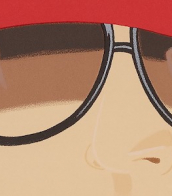

Robert Milton Ernest Rauschenberg was an American artist renowned for his pioneering work that blurred the boundaries between painting and sculpture, thereby anticipating the Pop art movement. From his early days at the Art Students League of New York to his experiments at Black Mountain College, Rauschenberg's career was marked by innovation and collaboration. His "Neo-Dadaist" approach, shared with contemporaries like Jasper Johns, questioned traditional distinctions between art objects and everyday items, drawing inspiration from Marcel Duchamp's Dadaist principles.
Rauschenberg's most notable works, such as "Erased de Kooning Drawing" and his "Combines," utilized found materials and images to create new art forms that challenged viewers' perceptions. His use of non-traditional materials like twine, soil, and even taxidermied animals, alongside traditional canvas and paint, set new precedents for what could be considered art. His groundbreaking silkscreen paintings incorporated found images, further cementing his role in the evolution toward Pop art.
The artist's work is represented in major museums and galleries worldwide, reflecting his significant impact on contemporary art. His pieces like "Canyon" and "Monogram" are celebrated for their innovative integration of sculpture and painting, while "Signs" captures the tumultuous spirit of the 1960s through its collage of cultural figures and events, housed in institutions like the Museum of Contemporary Art, San Diego, and The Minneapolis Institute of Arts.
For collectors and experts in art and antiques, Rauschenberg's oeuvre represents a critical junction in the history of modern art, where the lines between different media and disciplines were explored and often erased. His legacy is not just in the objects he created but in his bold reimagining of the art-making process itself, encouraging a dialogue between art and life that continues to inspire artists today.
For updates on new product sales and auction events related to Robert Milton Ernest Rauschenberg, consider signing up for our newsletter. This subscription service is tailored specifically for enthusiasts eager to stay informed about the latest opportunities to acquire works by or related to this transformative artist.


Robert Milton Ernest Rauschenberg was an American artist renowned for his pioneering work that blurred the boundaries between painting and sculpture, thereby anticipating the Pop art movement. From his early days at the Art Students League of New York to his experiments at Black Mountain College, Rauschenberg's career was marked by innovation and collaboration. His "Neo-Dadaist" approach, shared with contemporaries like Jasper Johns, questioned traditional distinctions between art objects and everyday items, drawing inspiration from Marcel Duchamp's Dadaist principles.
Rauschenberg's most notable works, such as "Erased de Kooning Drawing" and his "Combines," utilized found materials and images to create new art forms that challenged viewers' perceptions. His use of non-traditional materials like twine, soil, and even taxidermied animals, alongside traditional canvas and paint, set new precedents for what could be considered art. His groundbreaking silkscreen paintings incorporated found images, further cementing his role in the evolution toward Pop art.
The artist's work is represented in major museums and galleries worldwide, reflecting his significant impact on contemporary art. His pieces like "Canyon" and "Monogram" are celebrated for their innovative integration of sculpture and painting, while "Signs" captures the tumultuous spirit of the 1960s through its collage of cultural figures and events, housed in institutions like the Museum of Contemporary Art, San Diego, and The Minneapolis Institute of Arts.
For collectors and experts in art and antiques, Rauschenberg's oeuvre represents a critical junction in the history of modern art, where the lines between different media and disciplines were explored and often erased. His legacy is not just in the objects he created but in his bold reimagining of the art-making process itself, encouraging a dialogue between art and life that continues to inspire artists today.
For updates on new product sales and auction events related to Robert Milton Ernest Rauschenberg, consider signing up for our newsletter. This subscription service is tailored specifically for enthusiasts eager to stay informed about the latest opportunities to acquire works by or related to this transformative artist.


Robert Milton Ernest Rauschenberg was an American artist renowned for his pioneering work that blurred the boundaries between painting and sculpture, thereby anticipating the Pop art movement. From his early days at the Art Students League of New York to his experiments at Black Mountain College, Rauschenberg's career was marked by innovation and collaboration. His "Neo-Dadaist" approach, shared with contemporaries like Jasper Johns, questioned traditional distinctions between art objects and everyday items, drawing inspiration from Marcel Duchamp's Dadaist principles.
Rauschenberg's most notable works, such as "Erased de Kooning Drawing" and his "Combines," utilized found materials and images to create new art forms that challenged viewers' perceptions. His use of non-traditional materials like twine, soil, and even taxidermied animals, alongside traditional canvas and paint, set new precedents for what could be considered art. His groundbreaking silkscreen paintings incorporated found images, further cementing his role in the evolution toward Pop art.
The artist's work is represented in major museums and galleries worldwide, reflecting his significant impact on contemporary art. His pieces like "Canyon" and "Monogram" are celebrated for their innovative integration of sculpture and painting, while "Signs" captures the tumultuous spirit of the 1960s through its collage of cultural figures and events, housed in institutions like the Museum of Contemporary Art, San Diego, and The Minneapolis Institute of Arts.
For collectors and experts in art and antiques, Rauschenberg's oeuvre represents a critical junction in the history of modern art, where the lines between different media and disciplines were explored and often erased. His legacy is not just in the objects he created but in his bold reimagining of the art-making process itself, encouraging a dialogue between art and life that continues to inspire artists today.
For updates on new product sales and auction events related to Robert Milton Ernest Rauschenberg, consider signing up for our newsletter. This subscription service is tailored specifically for enthusiasts eager to stay informed about the latest opportunities to acquire works by or related to this transformative artist.


Edward Steichen was a Luxembourgish American photographer, painter, and curator, renowned as one of the most prolific and influential figures in the history of photography.
Steichen was credited with transforming photography into an art form. His photographs appeared in Alfred Stieglitz's groundbreaking magazine Camera Work more often than anyone else during its publication run from 1903 to 1917. Stieglitz hailed him as "the greatest photographer that ever lived".


Edward Steichen was a Luxembourgish American photographer, painter, and curator, renowned as one of the most prolific and influential figures in the history of photography.
Steichen was credited with transforming photography into an art form. His photographs appeared in Alfred Stieglitz's groundbreaking magazine Camera Work more often than anyone else during its publication run from 1903 to 1917. Stieglitz hailed him as "the greatest photographer that ever lived".


Edward Steichen was a Luxembourgish American photographer, painter, and curator, renowned as one of the most prolific and influential figures in the history of photography.
Steichen was credited with transforming photography into an art form. His photographs appeared in Alfred Stieglitz's groundbreaking magazine Camera Work more often than anyone else during its publication run from 1903 to 1917. Stieglitz hailed him as "the greatest photographer that ever lived".


Edward Steichen was a Luxembourgish American photographer, painter, and curator, renowned as one of the most prolific and influential figures in the history of photography.
Steichen was credited with transforming photography into an art form. His photographs appeared in Alfred Stieglitz's groundbreaking magazine Camera Work more often than anyone else during its publication run from 1903 to 1917. Stieglitz hailed him as "the greatest photographer that ever lived".


Robert Milton Ernest Rauschenberg was an American artist renowned for his pioneering work that blurred the boundaries between painting and sculpture, thereby anticipating the Pop art movement. From his early days at the Art Students League of New York to his experiments at Black Mountain College, Rauschenberg's career was marked by innovation and collaboration. His "Neo-Dadaist" approach, shared with contemporaries like Jasper Johns, questioned traditional distinctions between art objects and everyday items, drawing inspiration from Marcel Duchamp's Dadaist principles.
Rauschenberg's most notable works, such as "Erased de Kooning Drawing" and his "Combines," utilized found materials and images to create new art forms that challenged viewers' perceptions. His use of non-traditional materials like twine, soil, and even taxidermied animals, alongside traditional canvas and paint, set new precedents for what could be considered art. His groundbreaking silkscreen paintings incorporated found images, further cementing his role in the evolution toward Pop art.
The artist's work is represented in major museums and galleries worldwide, reflecting his significant impact on contemporary art. His pieces like "Canyon" and "Monogram" are celebrated for their innovative integration of sculpture and painting, while "Signs" captures the tumultuous spirit of the 1960s through its collage of cultural figures and events, housed in institutions like the Museum of Contemporary Art, San Diego, and The Minneapolis Institute of Arts.
For collectors and experts in art and antiques, Rauschenberg's oeuvre represents a critical junction in the history of modern art, where the lines between different media and disciplines were explored and often erased. His legacy is not just in the objects he created but in his bold reimagining of the art-making process itself, encouraging a dialogue between art and life that continues to inspire artists today.
For updates on new product sales and auction events related to Robert Milton Ernest Rauschenberg, consider signing up for our newsletter. This subscription service is tailored specifically for enthusiasts eager to stay informed about the latest opportunities to acquire works by or related to this transformative artist.


Edward Steichen was a Luxembourgish American photographer, painter, and curator, renowned as one of the most prolific and influential figures in the history of photography.
Steichen was credited with transforming photography into an art form. His photographs appeared in Alfred Stieglitz's groundbreaking magazine Camera Work more often than anyone else during its publication run from 1903 to 1917. Stieglitz hailed him as "the greatest photographer that ever lived".


Edward Steichen was a Luxembourgish American photographer, painter, and curator, renowned as one of the most prolific and influential figures in the history of photography.
Steichen was credited with transforming photography into an art form. His photographs appeared in Alfred Stieglitz's groundbreaking magazine Camera Work more often than anyone else during its publication run from 1903 to 1917. Stieglitz hailed him as "the greatest photographer that ever lived".


Aleksander Mikhailovich Rodchenko (Russian: Александр Михайлович Родченко) was a pivotal figure in the avant-garde movement of Russian art, whose innovative work spanned painting, sculpture, photography, and graphic design. Born in Saint Petersburg in 1891, Rodchenko emerged as a leading artist in the early 20th century, deeply influenced by the cultural upheavals of his time. His commitment to experimentation and his pursuit of new artistic forms and methods made him a central figure in the development of Constructivism, a movement that sought to apply art to practical and social purposes.
Rodchenko's art is characterized by its bold experimentation with perspective, form, and color. His photographic work, in particular, showcased his fascination with unusual viewpoints and his ability to transform ordinary subjects into dynamic compositions. This approach not only redefined photographic practice but also reflected his belief in the artist's role in constructing a new visual environment. Among his most recognized works are his series of abstract paintings, his design for the poster "Books (Please)! In All Branches of Knowledge," and his groundbreaking photography, which continues to influence artists today.
Rodchenko's contributions to art and design extend beyond his own creations. He was an influential teacher at the Higher Technical-Artistic Studios (VKhUTEMAS), a hotbed for avant-garde ideas and practices. His works are held in major museums and galleries worldwide, including the Museum of Modern Art in New York and the State Tretyakov Gallery in Moscow, testament to his enduring legacy in the art world.
For collectors and experts in art and antiques, Rodchenko's work offers a fascinating insight into the revolutionary spirit of early 20th-century Russian art. His innovative approach to form, combined with his commitment to using art as a tool for social change, makes his work highly sought after and continually relevant.
To stay informed about new product sales and auction events related to Aleksander Mikhailovich Rodchenko, sign up for our updates. This subscription is your gateway to the latest in the world of art collecting, ensuring you don't miss out on acquiring pieces from one of the avant-garde's most influential figures.










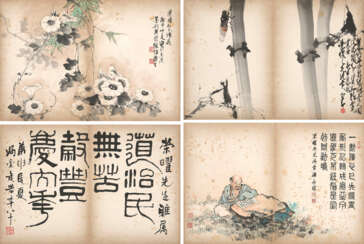













.jpg)
